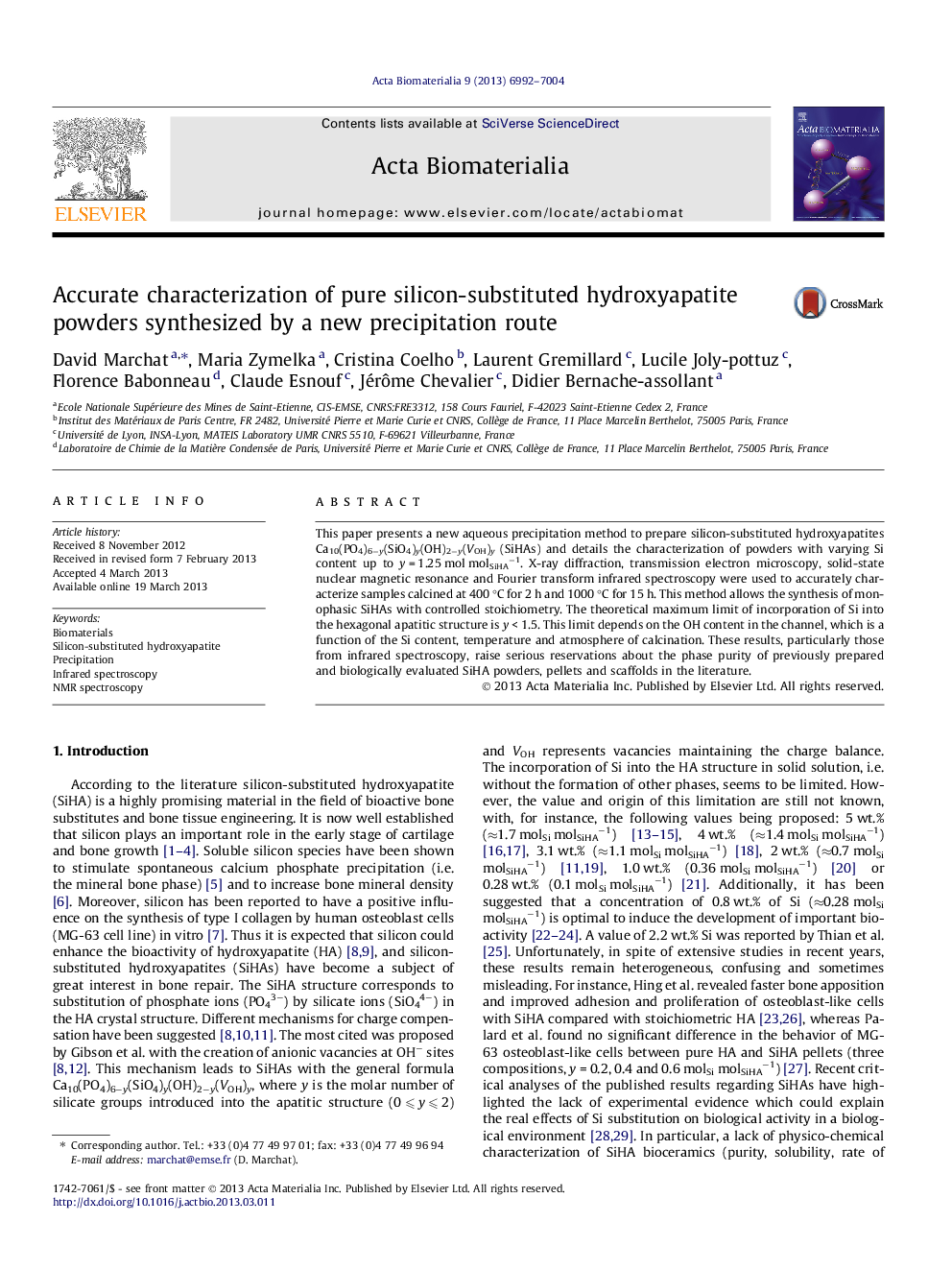| Article ID | Journal | Published Year | Pages | File Type |
|---|---|---|---|---|
| 10159561 | Acta Biomaterialia | 2013 | 13 Pages |
Abstract
This paper presents a new aqueous precipitation method to prepare silicon-substituted hydroxyapatites Ca10(PO4)6ây(SiO4)y(OH)2ây(VOH)y (SiHAs) and details the characterization of powders with varying Si content up to y = 1.25 mol molSiHAâ1. X-ray diffraction, transmission electron microscopy, solid-state nuclear magnetic resonance and Fourier transform infrared spectroscopy were used to accurately characterize samples calcined at 400 °C for 2 h and 1000 °C for 15 h. This method allows the synthesis of monophasic SiHAs with controlled stoichiometry. The theoretical maximum limit of incorporation of Si into the hexagonal apatitic structure is y < 1.5. This limit depends on the OH content in the channel, which is a function of the Si content, temperature and atmosphere of calcination. These results, particularly those from infrared spectroscopy, raise serious reservations about the phase purity of previously prepared and biologically evaluated SiHA powders, pellets and scaffolds in the literature.
Keywords
Related Topics
Physical Sciences and Engineering
Chemical Engineering
Bioengineering
Authors
David Marchat, Maria Zymelka, Cristina Coelho, Laurent Gremillard, Lucile Joly-pottuz, Florence Babonneau, Claude Esnouf, Jérôme Chevalier, Didier Bernache-assollant,
